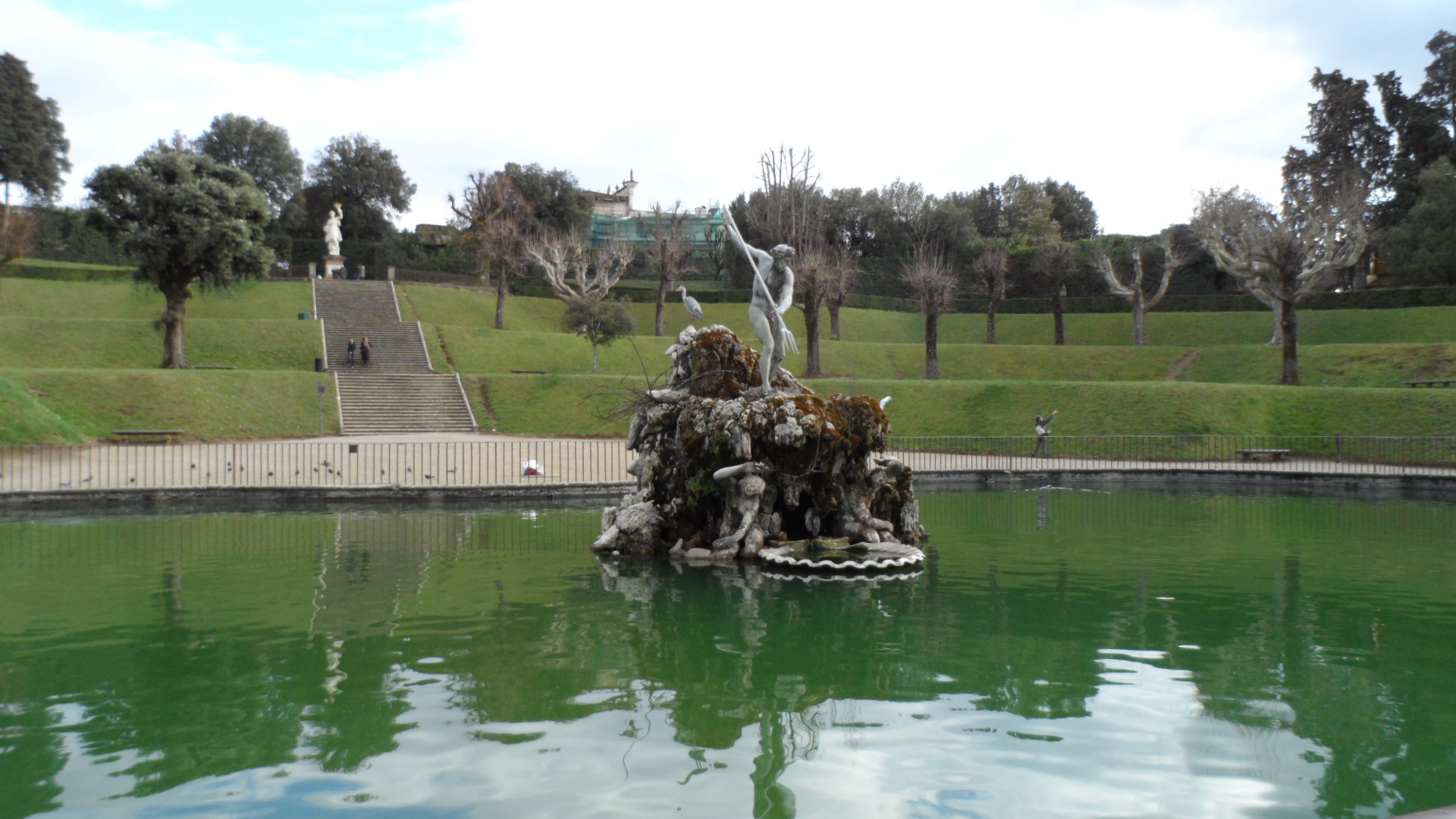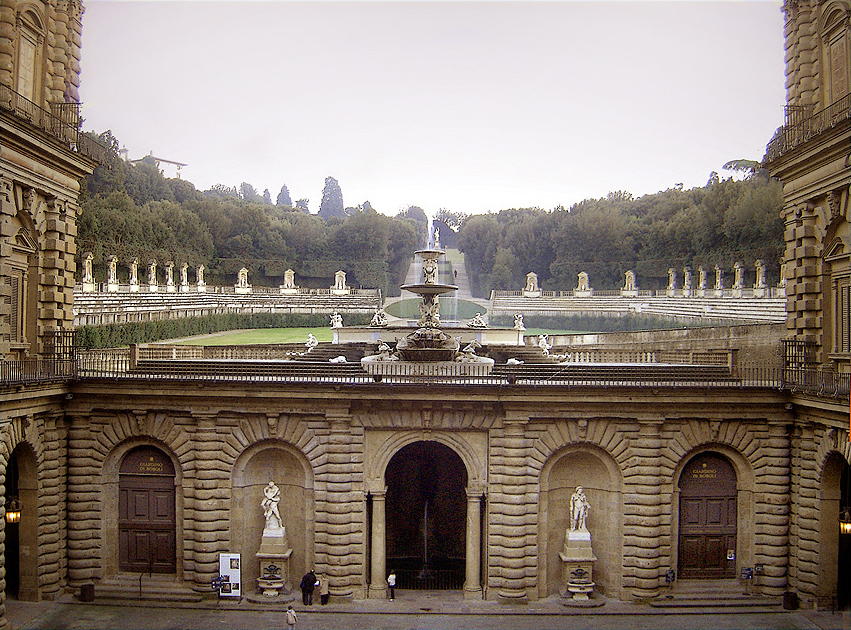In this chapter, Langdon and Sienna take the following course through the Boboli Gardens.

The Florentine nickname for a fountain within Boboli Gardens sculpted by Stoldo Lorenzi. Langdon and Sienna come upon this fountain, “the central point of the gardens”, as they emerge from La Cerchiata’s tunnel and continue their journey. The fountain contains a sculpture of Neptune, the Roman god of the sea, and is nicknamed for the trident he holds.
Boboli Amphitheater
The Boboli Amphitheater in the Boboli Gardens is an entertainment venue built deep into the hillside beside the Pitti Palace. Langdon and Sienna traverse the amphitheater as they move through the gardens toward the palace.
Obelisk of Ramses II
 This tall and tapering four-sided monument, positioned in the center of the Boboli Amphitheater, is passed by Langdon and Sienna on their journey. The obelisk was originally part of a pair of obelisks from Heliopolis erected by Ramses II, the third Egyptian pharaoh; its counterpart now resides in Rome.
This tall and tapering four-sided monument, positioned in the center of the Boboli Amphitheater, is passed by Langdon and Sienna on their journey. The obelisk was originally part of a pair of obelisks from Heliopolis erected by Ramses II, the third Egyptian pharaoh; its counterpart now resides in Rome.
 The Baths of Caracalla were public baths built in Rome under the reign of Emperor Caracalla. These baths were damaged by an earthquake in 2009 and their ruins are today a tourist attraction, but has been moved from its original location when Langdon and Sienna pass by. Langdon calls the object “the world’s largest bathtub” and thinks to himself that it should really be placed somewhere else.
The Baths of Caracalla were public baths built in Rome under the reign of Emperor Caracalla. These baths were damaged by an earthquake in 2009 and their ruins are today a tourist attraction, but has been moved from its original location when Langdon and Sienna pass by. Langdon calls the object “the world’s largest bathtub” and thinks to himself that it should really be placed somewhere else.
This street, mentioned briefly in the description of the Pitti Palace, runs past the front of the palace. Langdon describes how the front yard of the palace is simply a “vast expanse of pavement” reaching down toward the road.

